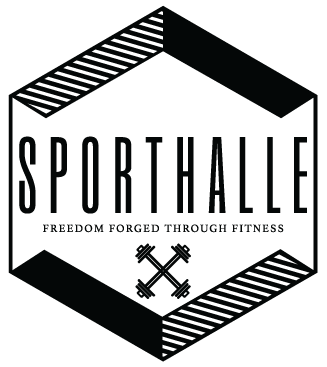Choose Your Hard: Prioritizing Health and Exercise Life is full of choices, each presenting its own set of challenges and rewards. Whether it’s personal growth, professional advancement, or simply navigating day-to-day activities, every path we choose comes with its own unique difficulties. The concept of “choosing your hard” encourages us to acknowledge that while all ...
The post Choose Your Hard: Prioritizing Health and Exercise appeared first on Sporthalle - New Braunfels.
Hydration: More Than Just Quenching Thirst The summer heat is here, the season of sweating! And we live in Texas, so go ahead and raise that sweat variable to the nth degree. Drinking water/ staying hydrated is always important, but with the seasonal extra loss through sweating, it becomes even more important to make it ...
The post Hydration: More Than Just Quenching Thirst appeared first on Sporthalle - New Braunfels.
Personal training and group classes both have their merits. Choosing which is best for you depends on your preferences, goals, and circumstances. Here’s why personal training might be a preferred option: Tailored Attention: Personal training offers one-on-one attention from a certified fitness professional. This means the workout plan is entirely customized to your goals, fitness ...
The post Why Personal Training Might Be Best For You appeared first on Sporthalle - New Braunfels.
“BRACE!” I’m sure you’ve heard your coach yell that a time or two. Or maybe the coach asked if you were bracing when you lifted a weight that didn’t feel so great. Bracing is immensely important in CrossFit. When lifting heavy weights or moving moderate weights quickly, bracing is essential to keeping you ...
The post The Crucial Role of Bracing: A Guide to Safer and More Effective Workouts appeared first on Sporthalle - New Braunfels.
In a world obsessed with quick fixes and instant results, diets often emerge as the go-to solution for weight loss and improved health. However, despite their widespread popularity, diets are fundamentally flawed and often fail to deliver sustainable outcomes. In this post, we’ll delve into the reasons why diets don’t work and explore alternative approaches ...
The post The Illusion of Diets: Why They Don’t Work and What to Do Instead appeared first on Sporthalle - New Braunfels.
Rest days are an essential component of any fitness routine. While we may feel crushing guilt or pressure to constantly push ourselves to the very limits, proper rest and recovery are crucial for achieving peak performance and preventing burnout. Rest days are vitally important for recovery, allowing us to continue to push ourselves inside the ...
The post Mastering the Art of Rest: A Guide to Strategically Deciding When to Take Rest Days appeared first on Sporthalle - New Braunfels.
Embarking on a fitness journey requires more than just hitting the gym; it demands a thoughtful approach to nutrition. Macronutrients, including carbohydrates, proteins, and fats, are the powerhouse elements that can significantly impact your workout performance, recovery, and overall fitness goals. Here we explore how each macronutrient plays a crucial role in maximizing your gains ...
The post Fueling Your Fitness Journey: A Deep Dive into Macronutrients and Their Impact on Exercise Performance appeared first on Sporthalle - New Braunfels.
As we step into the new year, it’s the perfect time to set ambitious goals and work towards achieving them. Whether you want to lose weight, gain muscle, or improve your overall fitness, setting specific goals can help you stay motivated and track your progress. In this blog post, we will discuss strategies and tips ...
The post How to Crush Your 2024 Goals appeared first on Sporthalle - New Braunfels.

Building a strong immune system can start now. Like, literally, right this second. We’re in the midst of a pandemic and the information that we’re being fed is incredibly conflicted. From numbers of infected to mortality rates. All of the charts seem to be different and all of the experts have an opinion. All of ...
The post Building Unbreakable Immunity appeared first on Sporthalle - New Braunfels.
Here is how to master it… Depending on your sport the importance of speed could be a defining characteristic of your success. Naturally track and cross country athletes want to run fast, but speed can help in almost all team and individual sports where strength and conditioning comes into play. Whether you’re a running back ...
The post Speed Is a Skill appeared first on Sporthalle - New Braunfels.
Your Fitness Journey Starts Today
That first step is always the hardest. Let us help you take it. We're here to support you every step of the way.

